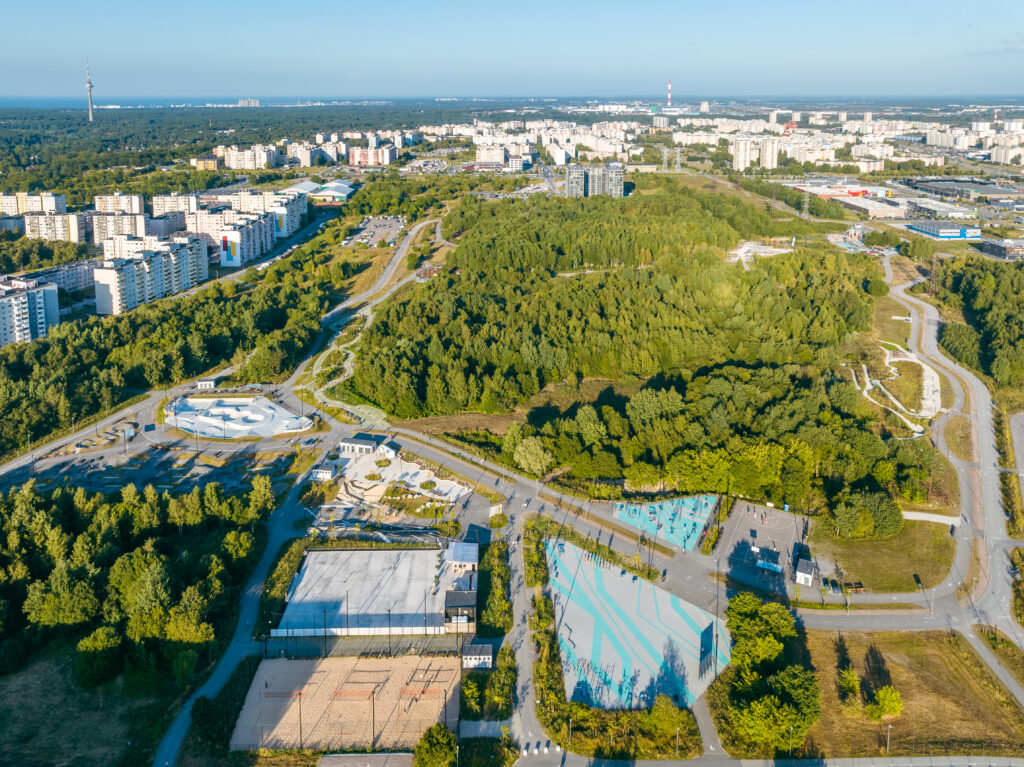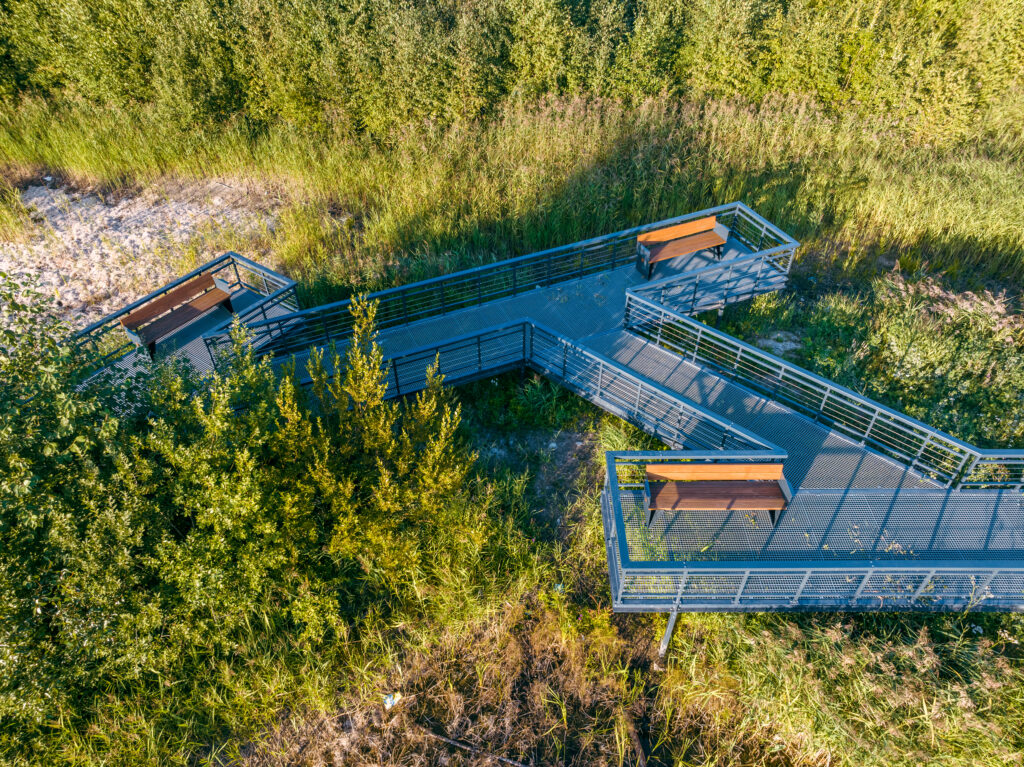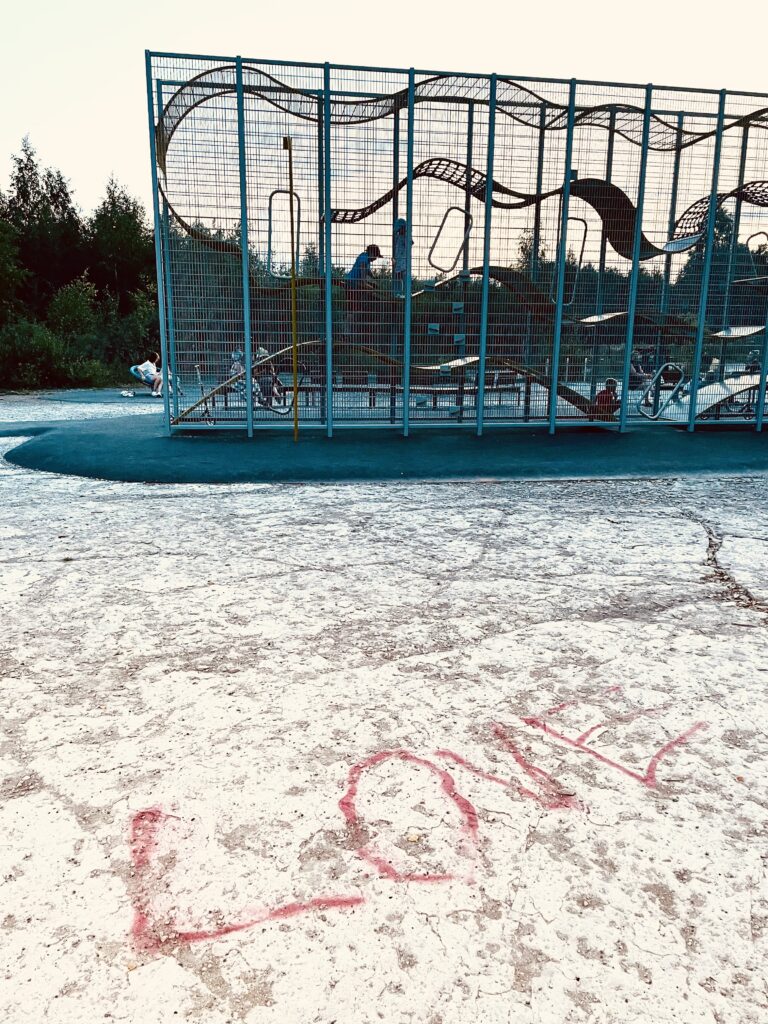The district of Tallinn with the largest number of inhabitants now has a park with numerous different recreational activities that are both exciting and fascinating. The most remarkable aspect is that the distinctive character of Tondiraba has been retained and featured. Starting from the apple trees from the time there were farms in Katleri and the random moss-covered concrete blocks up to limestone outcrops, former drainage ditches and the spontaneous small bridges by an unknown author. The small grove which has been the locals’ favourite place for a walk is retained as the heart of the park. The winding wood chip paths follow the former routes and thus provide joy of recognition. Playfully combining the former and the modern, the result is colourful and versatile. You can escape from the noisy city to the forest, have a barbecue with friends or play yourself breathless. It is a graceful and refreshing addition to the green corridor in Lasnamäe.
Maria Derlõš, urbanist and local resident
Barbecues are sizzling, with fancy ladies and fun-loving girls enjoying swinging side-by-side. Young boys chasing one another with sticks, a famous bodybuilder doing a demonstration in the outdoor gym, two girls painting by the pond, couples cuddling in hammocks, elderly ladies and gentlemen walking on the forest paths. Younger and older children speaking Russian or Estonian are gathering around the water pump to discuss how much water should be poured into the bowl and when the cork could be taken off to allow the water to flow down the ditch. A regular Saturday in Tondiraba Park.
Expanding over 28 hectares, the semi-natural park forms an important link in the spinal cord of Lasnamäe. The former marshland has long been at the mercy of human activity and then the elements. Therefore, it has evolved into a highly fascinating and peculiar green area that is equally loved by birds and animals as well as protected plants and amphibians.
The main idea in the landscape architecture was to retain the unique wasteland-like but diverse nature – somewhat wild and weary but a spontaneous and obstinate environment highly characteristic of Lasnamäe. On the one hand, it was attempted to retain and also exhibit the existing qualities, but only delicately without disturbing the natural balance. On the other hand, parks are also meant for people who have been attracted to the area with various possibilities to spend time in fresh air and get to know the natural scenery.
There are outdoor gyms, martial arts facilities, traffic park, playgrounds, dog parks, pumptrack, skatepark, beach volley courts and ice rink, and also numerous paths in the forest. You can have fun in the first water playground in Estonia and play ball in the smart ball pitch, and there is also a natural ditch next to one of the playgrounds with stepping stones made from the rocks gathered during the construction. In spring, you can put your creativity (and dry feet) to the test here. Forest paths are largely covered with wood chips collected from felling the trees during the construction while larger tree trunks were left in the park as deadwood. The rocks dug out and blasted in the playground construction were preserved as playground elements and now serve as basking decks for lizards. The natural course is supported also by large meadow areas. During the construction, the ponds were cleaned and the living conditions of newts greatly improved.


















































































































































































































